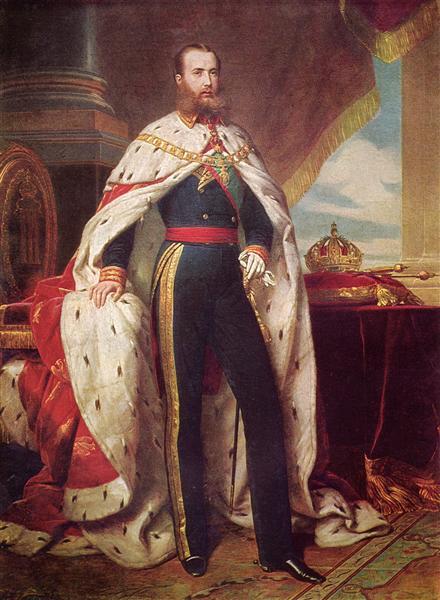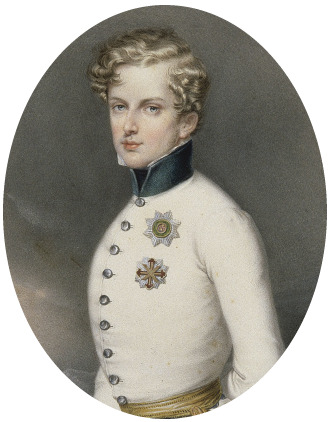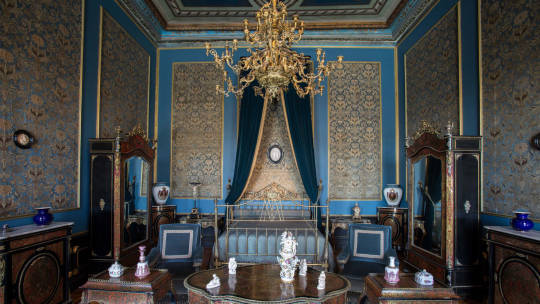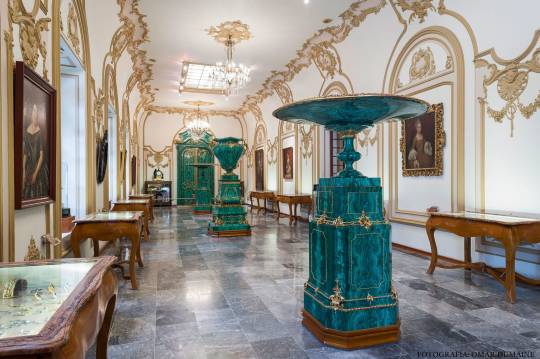#maximilian i of mexico
Text


Maximilian , Emperor of Mexico, reign: 1864-1867
- Possibly the better brother
Carlos I (V) , reign: 1519-1556
-has a chocolate named after him
- His two iconic bastards are also in this bracket.
Propaganda under the cut because there was a lot for both of them
Propaganda for Maximilian:
From: anon
-He traveled to Brazil
From: other anon
- He loved plants
- He was a sassy man
- He had good taste
- He learned Nahuatl
- He’s cute (I mean look at him)
- He said “gay rights”
- He banned child labour in Mexico
- He gave many rights back to indigenous people
- Bro was wronged by France (haven’t we all?)
- He’s baby
- Got executed, come on, give him this guys 🥺
From: other other anon
- He loved to design gardens and collect insects which makes me think he would've loved playing animal crossing
From @kaiserin-erzsebet:
An outspoken liberal in a period where the monarchy was still quite conservative.
Vice-Admiral of the Navy who initiated scientific projects and exploration.
Aesthetic girlie. Collected flowers, painted, wrote poetry, and kept a journal. He would have loved Tumblr.
(Probably) gay or bisexual.
Allegedly slapped Franz Joseph for refusing to allow Lombardy to have an elective body.
Sisi's favorite brother-in-law (and not in a romantic way, fuck you Netflix)
Refused to take the Mexican crown until a plebiscite had been held because he wanted to be invited by the Mexican people.
Gave up all of his Austrian titles to go to Mexico because he believed he had made a promise to them.
Understood why his execution was for the good of the Mexican republic.
Also, his wife was amazing and capable and the amount of pure misogyny that certain historians and biographers have thrown at her is ridiculous. I know this isn't a Carlota poll, but she'd want Max to win.
Netflix did him unbelievably dirty. Please give him this.
For Carlos V:
from @master-of-the-opera-house:
- Universal empire babey! Sure he lucked into it, but very much successfully kept it afloat in his time on the throne, more than less anyway.
- Born on a toilet at a party at 3am
- Mommy issues
- Daddy issues
- Shagged his step-grandma when he was 19. Love wins!
- Look at the size of that chin! A peasant had to tell him to close his mouth bc he couldn't keep his jaws shut by default
- If Leopold was the ugliest in the Austrian branch he's probably the ugliest or at least second in the Spanish branch
- Approved of a cocks-out nude statue of himself walked so nsfw fanart commissions could run
- The ✨ confidence ✨ he had to do that uwu
- God complex
- Accidentally shot a peasant dead with a crossbow once as a teen oopsie
- Burnt out and got depressed at the end of his life the least he could win is a poll
- Split the inheritance into the Spanish and Austrian branch so without him we literally wouldn't even be voting today
36 notes
·
View notes
Text

Thought I'd do a thing for @best-habsburg-monarch since they'd just finished their polls and someone i rooted for on my own always nonsense reasons actually clawed his way into the top three
#my art#history art#Habsburg history#House of habsburg#maria theresa#Maria theresia#Maximilian i of mexico#Rudolf ii#Rudolph ii#17th century#18th century#19th century#austrian history#Anyway. I love you rudolf 💖💜💙#Pleasure doing business with you all if it meant one funny freak could make it this far#Doesn't matter all my other lads lost rip ferdinand rip charlie quint rip leopold rip carlos rip franz rip felipe my in law
19 notes
·
View notes
Text


The Archduchess saw the Duke of Reichstadt for the last time on the morning of 4 July. Two days later on 6 July 1832, she gave birth to a second son. Once more the bells of the Vienna churches rang out in jubilation, the guns thundered, the flags waved and cheering crowds gathered outside the Castle of Schonbrurm. But in spite of an easy and comparatively painless birth, the young mother was afterwards so physically and mentally exhausted that she spent her days in tears. The baby was given the names of Ferdinand Maximilian, Ferdinand after his godfather the Crown Prince and Maximilian in memory of Sophia's father. The Bishop of Eylau who officiated at the christening, relates that when he visited the Archduchess after the ceremony, she never spoke to him of herself, her husband or her child but only of the Duke of Reichstadt, begging the Bishop to visit him and to help him with his prayers.
Franz Reichstadt was seen to smile for the last time when he was given the news of Ferdinand Maximilian's birth. The will to live, which till now had enabled him to fight his disease, had finally deserted him. In June he was still talking of convalescing in the sun of Naples, but by the middle of July he was resigned to die. It was as well for Sophia that she was spared those last tragic days, that she did not have to hear that terrible, tearing cough which left him without the strength to speak. She was still confined to her room when the end came on the 22 July and only his mother Marie Louise and the Archduke Franz Karl were present at his deathbed. The latter had the unenviable task of announcing Reichstadt's death first to his wife, then to the Emperor, who in a heartbroken letter to Prince Metternich wrote, "My grandson's sufferings were such that death came as a welcome release. It may also have been a blessing for my children and for the peace of the world. But for my part I shall always miss him."
The Emperor Franz was an old man with very few years to live, but the Archduchess Sophia was a young woman who had buried her youth in the Duke of Reichstadt's grave.
Haslip, Joan (1971). The Crown of Mexico: Maximilian and his Empress Carlota
#i've been thinking about them the whole day and now I'm emotional#sophie of bavaria archduchess of austria#napoleon ii duke of reichstadt#maximilian i of mexico#franz i of austria#archduke franz karl of austria#author: joan haslip#the crown of mexico: maximilian and his empress carlota (1972)#historicwomendaily
68 notes
·
View notes
Text
You know what I want? To meet the formula E drivers. I’m going this Saturday to the first race of the season and the pitlane walk passes are over 😔
#FormulaE#mexico city eprix#nyck de vries#stoffel vandoorne#pascal wehrlein#nyck cassidy#maximilian guenther#formula e#i just want an autograph
6 notes
·
View notes
Text
Me visiting a historical landmark that was home to a historical figure: wow I need this guy to be an angsty dumb teenager in clone high now
2 notes
·
View notes
Text
I think the Second Mexican Empire with Maximilian and Charlotte as its Emperor and Empress was doomed from the start. So much duplicity, infighting and betrayal. Both Maximilian and Charlotte meant well, but they were naive (especially Maximilian) about Mexico’s political instability and Napoleon III not being completely truthful with them. However, I do feel pity for them, especially when it comes to their tragic ends.
According to author M.M. McAllen, Maximilian’s intuition tried to warn him to not accept the role as emperor, but he eventually gave in due to pressure.
6 notes
·
View notes
Note
Can I get any Mexico headcanons perchance?
(Mexico representation in this America-focused fandom go brrrrrr)
i am always willing to contribute to the end of eurocentrism in this fandom 🫡 (still sad that nobody talks about african countries)
mexico is probably a middle ground in north america, personality-wise atleast. she doesn't have the outgoing and almost robotic nature of america, and she doesn't have the incredibly timid nature of canada. by all means, she's just a middle ground inbetween the 3. the grounder that makes sure neither of the other two get out of hand. does it work? perhaps.
on her own she's a very cheerful person, almost never letting others get her down. her happiness often radiates onto others, its infectious. is there some dark secret she's hiding behind it? no! not really, she accepts her problems and tries to fix them, but she's still an optimist at heart. tries her best despite all her issues
i can't say i know much about mexican international relations, but from what i can tell i can say she's pretty good friends with austria? while mexico did have some issues previously with his mother (cough the execution of maximilian i) generally the two hang out a lot and enjoy good times together, including flying! mexico does care for austria despite everything, and like all her friends she cares a lot about him.
she loves to swim. she fucking loves to swim its one of her favorite activities aside from flying. she finds it really fun and she loves the ocean in general! she also likes football (soccer) a lot, moreso watching than playing though.
her "govt assigned" username is mysteriousXylograph.
hope this suffices! <3
50 notes
·
View notes
Note
Seeing that w/e anon made me remember that just yesterday I was scrolling your blog, saw that Maximillian post, and teared up. Fuck that one hurts.
Arguably the most tragic and maligned figure in modern history. No one ever asks why the people that were in Maximilian’s immediate sphere served him with fanatic loyalty. They also completely ignore the fact that he chose to stay and die in Mexico as its Emperor and not flee to Europe to live a life of comfort. Benito Juárez is burning in hell
10 notes
·
View notes
Text
Being the queer tiefling I am, one of my mum's favorite phrases to judge my poor performance of femininity was "You'll never be invited to The Palace". I wasn't material for fairy tales if it wasn't to be a villain like Maleficent, I suppose.
15 years ago, I was in a long term relationship with a person who worked in "high culture". Therefore, I was invited to a the opening of a very relevant exhibit in Fine Arts Palace (one of the most important cultural centers in the country), on the same day THE PRESIDENT was there (I didn't see him, he was too short and it was too crowded. Not that I wanted to see him, either).
8 years ago (or something like that), I was in a play about the last days of Emperor Maximilian I and how his wife Charlotte descent into madness (it sounds very serious, but it was a comedy about what happened with the people on the court and their intrigues). We had two dates in the National Palace. At that time, it was just a museum, but it had been the house of most of the rulers in the country a long time ago (and it became the President home again, for the last 6 years).
In a couple of weeks, I will be presenting a friend's book. Where? In Los Pinos, the place that was the Presidential Residence during the decades where the National Palace was a museum (too complicated to explain in this post). Now Los Pinos is a cultural center. There will be no President in sight, hopefully.
See, Mom?
I've been officially invited to almost every semblance of a "palace" my city has to offer (I'm just missing Chapultepec, the only real castle in Mexico). I still suck at femininity.
I'm finding this absolutely hilarious.
7 notes
·
View notes
Note
It is known when the rumors about Archduke Maximilian's paternity began? Was it right from his conception and birth or when Napoleon III offered him to became the Emperor of Mexico? Was it has his dethronement and execution? Was it along afterwards? If there was prominent during his lifetime, it is know what his action was or his parents or his wife Empress Carlota?
Sorry, I'm totally out of my depths here. I am only dimly aware of these rumours myself, and the one biography of Napoleon II/Duke of Reichstadt that I have read dismissed the idea out of hand.
Maybe @archduchessofnowhere could help?
9 notes
·
View notes
Text


Margaret of Parma, Duchess of Parma reign: 1547-1586
- Illegitimate girlboss
Maximilian , Emperor of Mexico, reign: 1864-1867
- Possibly the better brother
From: anon
-He traveled to Brazil
From: other anon
- He loved plants
- He was a sassy man
- He had good taste
- He learned Nahuatl
- He’s cute (I mean look at him)
- He said “gay rights”
- He banned child labour in Mexico
- He gave many rights back to indigenous people
- Bro was wronged by France (haven’t we all?)
- He’s baby
- Got executed, come on, give him this guys 🥺
From: other other anon
- He loved to design gardens and collect insects which makes me think he would've loved playing animal crossing
From @kaiserin-erzsebet:
An outspoken liberal in a period where the monarchy was still quite conservative.
Vice-Admiral of the Navy who initiated scientific projects and exploration.
Aesthetic girlie. Collected flowers, painted, wrote poetry, and kept a journal. He would have loved Tumblr.
(Probably) gay or bisexual.
Allegedly slapped Franz Joseph for refusing to allow Lombardy to have an elective body.
Sisi's favorite brother-in-law (and not in a romantic way, fuck you Netflix)
Refused to take the Mexican crown until a plebiscite had been held because he wanted to be invited by the Mexican people.
Gave up all of his Austrian titles to go to Mexico because he believed he had made a promise to them.
Understood why his execution was for the good of the Mexican republic.
Also, his wife was amazing and capable and the amount of pure misogyny that certain historians and biographers have thrown at her is ridiculous. I know this isn't a Carlota poll, but she'd want Max to win.
Netflix did him unbelievably dirty. Please give him this.
#best habsburg bracket#house of habsburg#habsburg#maximilian i of mexico#the color coordination in these portraits is surprisingly good given the time difference
20 notes
·
View notes
Note
Thoughts on Maximilian I of Mexico?
The worst kind of European colonialist and imperialist. He got off lucky.

16 notes
·
View notes
Note
Okay, a weird question: the relationship between Sophie of Bavaria and her husband! Because like. I have this impression from them that they didn't exactly love each other, but got along fine, and also this one tumblr blog suggested a show about Sophie (which I find less interesting as a concept than a show about the 1848 revolution with Sophie as a major character, but nevermind) and it got me thinking about Franzi's old man...
Hello!! Sorry it took me so long (literal months); this is a super interesting question because I wonder about this too. Given that archduke Franz Karl is a very elusive figure, and that most of Sophie's biographies not only are in German, but are also just impossible to get (for me, living in the other side of the world), so I didn’t have much to work with. To answer this ask I used as my main source Jean-Paul Bled’s biography Sophie de Habsbourg, which quotes a lot of Sophie’s letters and diary entries, but there’s probably more out there in other books.
So what do we now about Sophie and Franz Karl’s relationship? Their marriage was arranged, as it was customary. It was part of King Max’s policy of strengthening Bavaria’s links to Austria (after a very long time of the two countries being enemies). Also Sophie’s half-sister Empress Caroline was really into the idea and apparently was the main promoter of the marriage project at the Viennese court (because who doesn’t want their sister to become their daughter-in-law?).
Sophie and Franz Karl met in May of 1824, on a visit the archduke did to the Bavarian royals at their residence in Tegernsee. We don’t have any first impression of Sophie on her future husband, but we do have Queen Caroline of Bavaria’s. She was… hmm… not impressed:
What to say of our little archduke? I thank Heaven that Sophie, with all the qualities that nature provided her, is so reasonable. He is a good boy, worried to do well. He solicits everyone’s advises, but he is terrible (…) He bores me to death. Sometimes I can’t stand it anymore. It’s truth, they say that he’s cultivated and starting to be popular. That should rejoice me, but sometimes I want to hit him. Sophie is so pretty and quick-witted.
Caroline after talking to Franz Karl apparently???

The one family member that was happy about the marriage was Sophie’s half-brother Crown Prince Ludwig, who wrote to Franz Karl that the closeness of their houses “can only have beneficial effects for our people, that Austria and Bavaria remain linked to each other, is of extreme importance for both of them”. A congratulation that screams political union through and through.
Franz Karl wasn’t considered good looking nor clever nor charismatic - his only true passion was hunting. Sophie was the exact opposite. From the get go they didn’t seem very compatible, but neither voiced any objection to the union and so they got married November 4 of 1824.
I couldn’t find much details of Sophie and Franz Karl’s first years of marriage, Jean-Paul Bled barely mentions him, which could be a result of Sophie herself not mentioning much her husband in her correspondance (Bled notes that during her first trip to Lombardy-Venetia with Franz Karl and emperor Franz in 1825, Sophie only mentions him in her letters once in all the time they were there). But that doesn’t necessarily have to mean they were in bad terms. Perhaps she really thought he was too boring to mention, perhaps she just was being considerate to her mother Caroline who we know did find him violently boring. At least they were fulfilling their marital duties, since Sophie got pregnant at least twice (some claim five times) during the first six years of her marriage, but all these pregnancies ended in miscarriages.
These first years of marriage are also the years from where the rumors of Sophie’s infidelities, either with Napoleon II or with Prince Gustav of Vasa, come from. For what I could find, the agreement is that there just isn’t enough evidence to prove this, and also that it would’ve been very stupid of her part to have an affair under her husband’s nose. Franz Karl, for his part, was either ignorant or indifferent to these rumors, since he never doubted the paternity of his children. After the birth of archduke Karl Ludwig, Sophie wrote that:
I can’t thank Heaven enough for not ceasing to bless me in my children that to this day have given me nothing but joy and satisfaction. My husband is very happy with this third boy and the emperor is enthusiastic (…). He still wants to have them. I’d like to know what he intends to do with this army of archdukes.
So we can assume that everything was going fine in their intimacy.
Franz Karl’s only moment at the center stage of Habsburg history is when he abdicated in favor of his eldest son, and yet he still remains a shadowy figure. We don't really know what he thought or felt during this time, but Sophie mentioned in her diary several times meeting with her husband at her salon the days prior to Emperor Ferdinand’s abdication, and while she doesn’t say what they talked about, giving the dates we could infer that perhaps he wasn’t so eager to give up being emperor as it is often claimed and that Sophie really needed to convince him.
They also were devoted parents who loved their children very much, and were devastated when their only daughter, archduchess Maria Anna, died aged only four years-old after a seizure. Sophie and Franz Karl both agreed that Maria Anna’s body wouldn’t go through the traditional mortuary Habsburg rites of removing her heart because they couldn’t stand the idea of their little girl’s body being cut.
But probably the hardest situation they had to go through as parents was the death of their son emperor Maximilian, executed in Mexico in 1867. Franz Karl, who learned of the news from his son Franz Josef, was the one who told Sophie. She narrates it in her diary as it follows:
The alarmed face of Fr[anz] alarmed me, I asked what was it, if there were news of Max, he told me they weren’t good, I guessed everything and cried throwing myself in his arms “shot, shot”
Franz Karl was at his wife’s deathbed with the whole family, and after Sophie died May 28 of 1872 “collapsed with grief, Franz Karl threw himself at the arms of his eldest son”. He prayed next to her body everyday after, until she was buried in the Capuchin crypt.
I don’t know if I answered your question, since their relationship is hard to put together for me too. Did they love each other? If we think of a devoted, almost obsessive love like the one their son Franz Josef had for his wife, then no. But after everything they went through together during forty-eight years, I find hard to think they did not had any feelings for each other. If they didn’t like each other at first, by old age they both had learned to enjoy each other’s company, since they were together often in the later part of their marriage. Overall their marriage seems to have been an harmonious, if not passionate, at least friendly one.
And I’m all down for a series about Sophie, no matter in which time is set, because honestly I just want something different other than the latest Sisi series whose only goal is to show off how different they are from Marischka’s trilogy and yet they still rely heavily on the mythology established by those movies. A well written series about the 1848 revolution from Sophie's POV would be fantastic and now I want it.
#sophie of bavaria archduchess of austria#archduke franz karl of austria#archduchess maria anna of austria#franz josef i of austria#maximilian i of mexico#archduke karl ludwig of austria#queen caroline of bavaria#ludwig i of bavaria#asks
17 notes
·
View notes
Text
Oliver Hernandez’s front yard hums with plenty of bugs for the 12-year-old and his friends to find.
“It’s kind of fun just knowing that there are lots of caterpillars in the yard,” he said.
About a third of the yard looks like a teeny swath of prairie, with wild indigo, bee balm and, until recently, a key plant for monarch butterflies: common milkweed.
Last fall, the city of Overland Park told Oliver’s mother to rip the milkweed out of her pollinator garden.
That bummed Oliver because it’s a plant where brightly striped yellow, black and white caterpillars would appear each summer, grow fat on leaves and transform into the feather-light marvels of nature most famous for what they do next.
“They are pretty,” he said. “Also, whenever they become butterflies, they fly to Mexico. I think that’s pretty cool.”
Across the U.S., milkweed bans are disappearing. But this Kansas suburb and plenty of other towns and cities across the Midwest continue to define it in their city codes as flora non-grata.
Sometimes city, county and state rules conflict, leaving homeowners to navigate mixed messages from local governments that can’t see eye-to-eye on whether to promote milkweed or kill it off.
City workers may not have much heart for enforcing these rules. The plight of the continent’s dwindling monarch population is, after all, well-known.
Ginger Werp, Oliver’s mother, got the impression that the city worker who showed up at her door in late September didn’t really like telling her to remove environmentally beneficial plants.
“Our world is becoming degraded and needs us to change,” Werp said. “Not all of the cities in Johnson County have this rule.”
In fact, Werp points out, this county encourages homeowners to plant common milkweed and reimburses part of the cost for people who replace grass turf with native plants — including this one. The goal is to feed wildlife and fill the soil with deep roots that absorb stormwater and slow the pace of pollution washing into streams.
Werp knows about the program because she works at a nonprofit organization that, among other things, helps the county run it.
And she knows about native plants because wading into prairies to identify species and collect seeds for habitat restoration projects is her full-time job.
A clash of aesthetics
Oliver’s front-yard insectary likely came to the city’s attention because his mother and her neighbors have very different tastes in landscaping.
On a street lined with neatly trimmed bushes and traditional lawns, Werp’s little meadow is perhaps 12 feet by 7 feet. The tallest plants, native Maximilian sunflowers, tower above her head.
Instead of mulching the bed in the typical Suburban style (with cedar chips or other store-bought options), Werp lets fallen sycamore leaves mulch her plot.
Rather than chopping down plant stalks in the fall, she lets them stand, so her family can watch finches raid the garden for seeds all winter.
Werp knows this isn’t everyone’s cup of tea.
“I’ve had some uncomfortable conversations with neighbors about it,” she said of her flower bed. “But it doesn’t bother me. … I think it’s pretty, I think it’s fun. My son and I have a good time out here.”
She supposes a neighbor became concerned that her naturalistic landscaping would hurt home resale values.

A monarch caterpillar and a milkweed beetle munch on common milkweed in Ginger Werp's garden in Overland Park last summer. Ginger Werp
But when a city worker showed up to inspect her handiwork, he said most of the plants could stay. She only had to remove the contraband common milkweed, Asclepias syriaca.
Werp agreed and the matter ended there.
Had she refused, the city could have sent someone to remove the milkweed and charge her for the work.
Overland Park’s code allows it to prosecute violators, though it’s not clear that the city would actually pursue something so stringent against a butterfly enthusiast. The penalties include a fine of $50 to $500 and/or up to 10 days in jail.
City codes vs. conservation
Other cities in Kansas and nearby states frown on milkweed, too — usually common milkweed but sometimes its relatives, as well.
Winfield, Kansas, puts common milkweed on its list of “rank” plants that harbor rats and insects, pose fire risks or blight neighborhoods.
Sometimes, city codes hinge on context.
Prairie Village lists common milkweed as a no-no, followed immediately by this caveat: “Native plants contained in a native garden, such as common milkweed and other pollinators (sic), would be considered a cultivated garden and not classified as a rank weed.”
City bans on milkweed are on the way out, the National Wildlife Federation says, a fact that it welcomes.
“They have been historically very, very common,” said Mary Phillips, head of the group’s Garden for Wildlife program that aims to integrate habitat into cities and suburbs. “Particularly in the central United States.”
She traces that history to the region’s agriculture. Milkweed can sicken livestock when they eat enough of it. Animals tend to steer clear of the toxic plants, but accidental poisonings do happen, particularly if milkweed infiltrates a hayfield and gets cut, dried and served up to livestock mixed into their hay.
Cities that no longer worry about keeping cattle safe have nevertheless retained the historical opposition to milkweed.
“The real trend is that those bans are being reversed,” Phillips said. “There’s a lot of pushback to get those overturned.”
In 2017, Illinois passed two state laws. One forced cities and counties to drop milkweed bans on common milkweed. The other declared milkweed the state wildflower.
Illinois cities such as Ottawa still have bans on their books, but the state law trumps it.
Asclepias syriaca, or common milkweed, is the species that cities most commonly target.
This species spreads not just through its seeds, but also through underground runners.
It takes work to control it in a flower garden, which might explain city bans where they still exist.
Bug chow
The reality is, many cities may not have anyone on staff who knows when or why milkweed was banned.
An Overland Park spokesperson said the city considers common milkweed a noxious weed because the Kansas Department of Agriculture does.
But the state agency refuted that. It says all Kansas milkweeds are “native and beneficial.”
“As far as we know it has never been listed as a noxious weed and there is no indication that there is any interest in listing it as noxious,” a Department of Agriculture spokeswoman said by email. “While it’s not healthy for cattle to eat, they generally avoid it.”
The center of the country is a significant flyway for migrating monarchs. And on their way north from Mexico each spring, they lay eggs.

Common milkweed was a key feature of Ginger Werp's front yard in past years. In September, Overland Park asked her to remove it. Ginger Werp
These famous travelers — by some counts, they were five times as numerous in the 1990s — can’t survive without milkweed.
A monarch butterfly can happily nectar on the blossoms of a wide variety of plant species, but its offspring eat just one thing: milkweed leaves. Without that, the females can’t produce descendants any more than humans can rear babies without breast milk or formula.
But milkweed has gotten harder to find.
“That entire (central) flyway was so heavy with milkweed many, many years ago,” Phillips said.
But today, as Monarch Watch at the University of Kansas notes, genetically modified corn and soybeans allow aggressive glyphosate herbicide (sold most commonly under the brand name Roundup) application that kills, among other things, milkweed. The plants have disappeared from tens of millions of acres of cropland.
Monarch Watch founder Chip Taylor and other researchers wrote in 2020 that restoring milkweed “is the conservation measure that will have the greatest impact” for helping the insects.
Monarch Watch distributes milkweed plants for habitat restoration, encourages the creation of pollinator gardens in cities and suburbs, and mails free plants to eager schools.
Common milkweed holds particular significance.
A 2018 study by researchers at Iowa State University and the USDA compared nine types of milkweed at 10 sites across Iowa from 2015 to 2017. They found Asclepias syriaca was one of two types where monarchs laid the most eggs.
Its decline makes some homeowners passionate about offering their yards as refuge by planting the long-maligned species, with its large leaves and spheres of pink blooms.
Mixed messages
As some governments see the plant in a new light, it can lead to conflicting messages, such as the discrepancy between Johnson County and Overland Park.
In 2014, Canada’s most populous province, Ontario, ended its battle against common milkweed. But as recently as last summer, a butterfly enthusiast there lost her milkweed-heavy pollinator garden to Toronto workers with weed wackers enforcing the city’s landscaping rules.
Lawrence lists common milkweed as a weed in its city code, but its parks and recreation department grows the plant in pollinator gardens.
“Our stance is that common milkweed in a properly maintained garden is perfectly acceptable,” a city spokeswoman said by email.
The city, which is part of a National Wildlife Federation pledge to support monarchs, says it can enforce its weed rule when properties aren’t properly tended.
But a citizen advisory board has asked the city commission to strike milkweed and other plants from Lawrence’s list of 56 weed species. It recommends using the state’s far shorter list.
“The list has kind of grown (over the decades) and nobody knows where a lot of this stuff came from,” said advisory board vice chairman Ben Sikes, a biologist. “Many of the species that are on there, we know are native species. Many of them are important for habitat or for food for native animals and insects.”
The Lawrence City Commission hasn’t acted on the recommendation.
#Milkweed#natural gardening#When a Kansas county wants people to plant milkweed but a city makes them rip it out#milkweed bans#kansas
21 notes
·
View notes
Text
Chapultepec Castle

















Chapultepec Castle is located in Mexico City, Mexico. The fortress was built in 1725 by Viceroy Bernardo de Gálvez to serve as the home for the Viceroy as the commander in chief of the Spanish colony, New Spain. After the Mexican War of Independence from 1810-1821, the structure was eventually used as a military academy in 1841. In 1847, it was the site of the Battle of Chapultepec during the Mexican-American war. In 1864 it was remodeled and additions were added. It became an official royal residence of Emperor Maximilian I, and his wife, Empress Carlota, who took residence during the Second Mexican Empire. It is the only castle in North America that served as a residence for royalty. Maximilian created the castle’s current floor plan and neoclassical style. In 1867, following the establishment of the Republic, Maximilian’s reign ended as President Benito Juárez regained power. Today, the castle houses the National Museum of History, the Hall of Viceroys with every viceroy who ruled Mexico from 1535-1821, impressive gardens, and marble terraces. The castle’s land has been inhabited since the days of the Aztec Empire. In the 15th century, the Aztecs built the aqueduct from Chapultepec to Tenochtitlan.
2 notes
·
View notes
Photo

Archduke Franz Karl of Austria (1802–1878). By Leopold Kupelwieser.
He was the father of two emperors: Franz Joseph I of Austria and Maximilian I of Mexico. Through his third son Karl Ludwig, he was the grandfather of Archduke Franz Ferdinand of Austria (whose assassination sparked the hostilities that led to the outbreak of World War I) and the great-grandfather of the last Habsburg emperor Karl I.
#Leopold Kupelwieser#erzherzog#archduke#erzherzog franz karl#haus habsburg lothringen#full length portrait#house of habsburg lorraine#full-length portrait#in armour#kaisertum österreich#mexican empire#imperio mexicano#ww1
13 notes
·
View notes